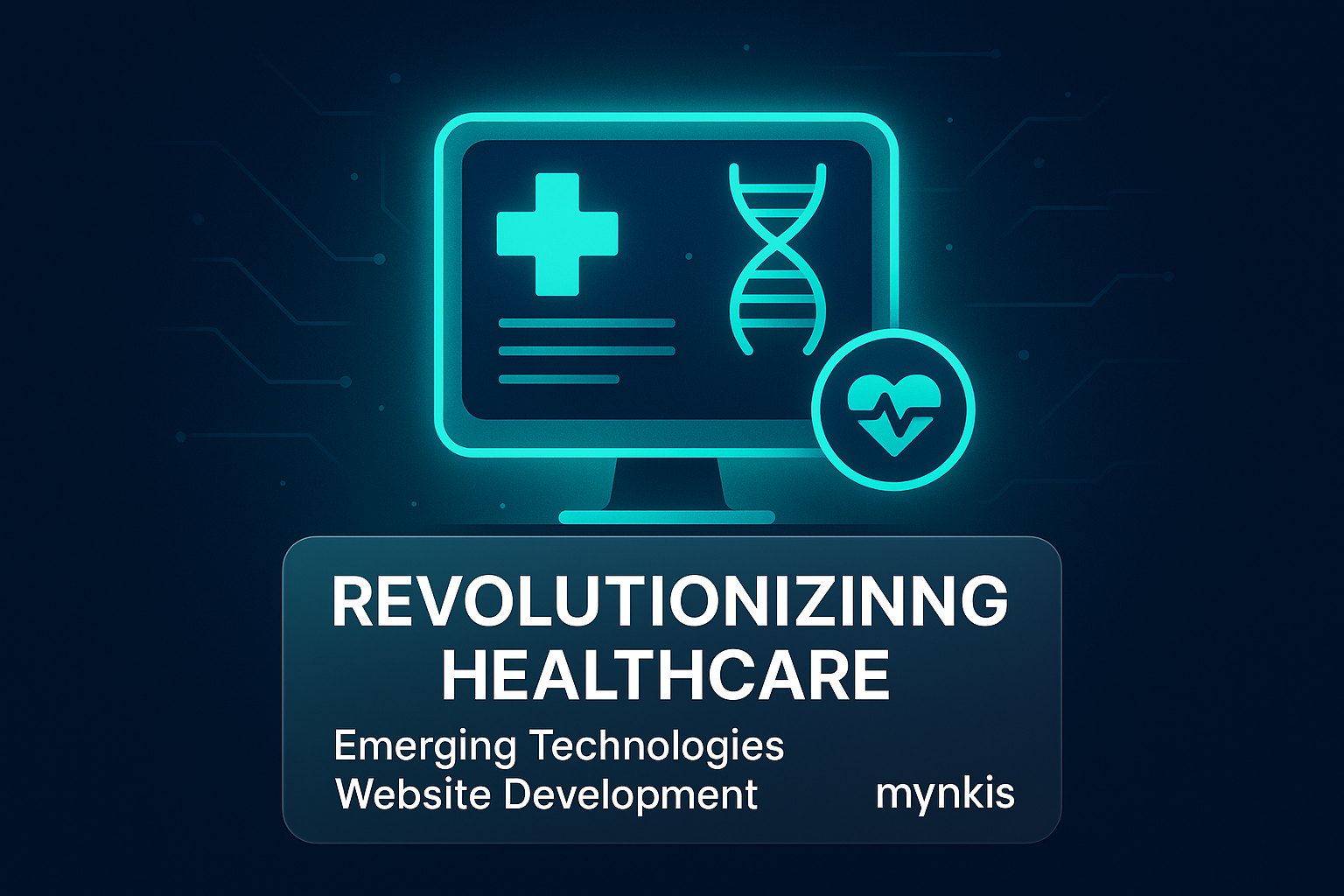Schedule a Demo
The role of digital technology in healthcare has never been more crucial. As healthcare providers strive to enhance patient care, we're observing a rapid adoption of cutting-edge technologies in website development. My experience with clinics and hospitals has shown me how the adoption of technologies like AI and blockchain is revolutionizing patient portals and data management systems. These innovations are crucial, especially when meeting HIPAA compliance and enhancing the security of patient information.
Artificial Intelligence has transformed how patients interact with medical websites. In my work with operations managers, I've seen how AI chatbots can handle preliminary medical queries and improve patient engagement 24/7. Based on available research, incorporating AI into patient portals can significantly enhance user satisfaction, yet individual experiences may vary depending on the system's setup. Hospitals implementing AI-driven portals are finding better diagnostic support tools and more efficient triage systems.
One of the greatest challenges in healthcare is ensuring the security of patient data. Enter blockchain. By decentralizing data, blockchain provides a nearly impenetrable barrier to data breaches, ensuring that patient information remains confidential and secure. My experience has shown me that hospitals embracing blockchain can maintain continuity of care seamlessly by sharing data across facilities, thus improving patient outcomes and respecting their privacy.
Progressive Web Apps (PWAs) have become game-changers in user experience. They allow healthcare providers to offer faster, more engaging patient interfaces. In my opinion, PWAs can reduce load times dramatically, which is critical in urgent care scenarios where every second counts. Hospitals utilizing PWAs have reported smoother patient portals that adapt seamlessly across devices, thereby enhancing accessibility to healthcare services from anywhere.
I've seen the impact of Augmented Reality (AR) in healthcare education first-hand. AR technologies are being integrated into website development to offer cutting-edge medical training platforms. Doctors and nurses can now simulate surgeries or treatments, enhancing their skills and, ultimately, the quality of care. Several institutions, such as Mayo Clinic, use AR to elevate the medical education process Mayo Clinic.
Voice technology is not just for home devices; it's now enhancing healthcare interfaces too. I've worked with clinics implementing voice command functionalities in their patient portals, allowing those with mobility or vision impairments to access services easier. Additionally, voice technology enables more natural user interactions, which could improve the patient's experience and reduce the number of clicks needed for navigation on healthcare websites.
Machine learning is poised to predict patient needs better than ever before. By analyzing patterns in patient data, these technologies help personalize care plans on healthcare websites. Based on research from Harvard Medical School, predictive analytics can forecast potential health risks, enabling timely interventions Harvard Medical School. My experience suggests that while incredibly promising, the success of these tools can be contingent upon their customization and integration into existing healthcare systems.
The Internet of Things (IoT) is pivotal in creating interconnected healthcare websites capable of remote patient monitoring. I've seen this technology play a critical role in managing chronic diseases by seamlessly integrating data from wearable devices. This not only facilitates early detection but also ensures continuous care without the need for constant hospital visits. IoT-driven healthcare services are evolving rapidly, but some limitations, like device compatibility and the need for robust infrastructure, remain.
Technological innovation must align with regulatory requirements like HIPAA. Through my dealings with healthcare entities, I've realized how challenging it can be to balance cutting-edge tech with compliance. It's essential for clinics and hospitals to prioritize systems that ensure data encryption and privacy adherence. As noted by The National Institute of Standards and Technology (NIST), maintaining compliance often requires an updated, dynamic approach to cybersecurity NIST. I feel we've got to keep cybersecurity at the forefront even as we embrace new technologies.
Looking to the horizon, we can envision a future where websites become central hubs for holistic patient care. Combining technologies discussed here will create comprehensive patient journey maps, empowering users with all the tools they need for health management at their fingertips. As confirmed by The Commonwealth Fund, healthcare IT investments continue to surge in anticipation of these enhancements The Commonwealth Fund. Reflecting on my work with healthcare professionals, I am convinced that staying ahead with technology without losing sight of patient-centric care will define the successful facilities of tomorrow.
